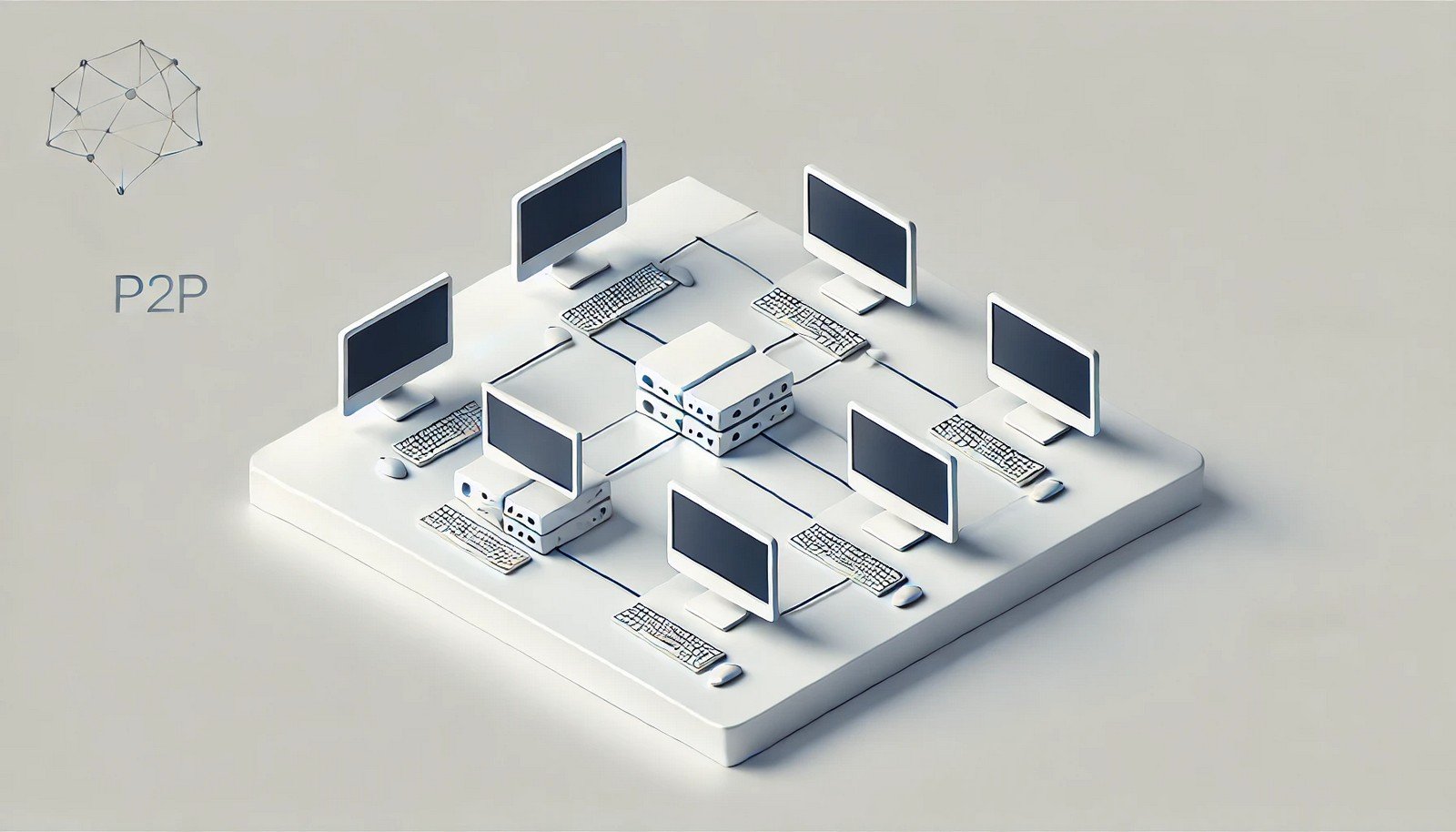Peer-to-Peer Architecture
 (Representational Image | Source: Dall-E)
(Representational Image | Source: Dall-E)
Quick Navigation:
- Peer-to-Peer Architecture Definition
- Peer-to-Peer Architecture Explained Easy
- Peer-to-Peer Architecture Origin
- Peer-to-Peer Architecture Etymology
- Peer-to-Peer Architecture Usage Trends
- Peer-to-Peer Architecture Usage
- Peer-to-Peer Architecture Examples in Context
- Peer-to-Peer Architecture FAQ
- Peer-to-Peer Architecture Related Words
Peer-to-Peer Architecture Definition
Peer-to-peer (P2P) architecture is a distributed network structure where computers, known as peers, share resources directly without a centralized server. Each peer can act as both a client and a server, enabling resource sharing such as files, processing power, and bandwidth. P2P architecture is commonly used in applications like file-sharing networks, cryptocurrency systems, and decentralized communication platforms. Notable examples include BitTorrent and blockchain networks.
Peer-to-Peer Architecture Explained Easy
Think of it like a neighborhood swap meet. Instead of everyone going to a big store (a central server), neighbors share stuff directly with each other. If one neighbor has a toy or tool you want, you borrow it from them instead of going to a store. In peer-to-peer networks, computers share files and resources with each other directly, without needing a central computer to organize everything.
Peer-to-Peer Architecture Origin
The idea of peer-to-peer systems dates back to the early days of computing. Early file-sharing networks like Napster and Kazaa brought peer-to-peer architecture to mainstream attention in the late 1990s. Over time, P2P systems evolved into more sophisticated forms, including decentralized cryptocurrencies and distributed computing projects.
Peer-to-Peer Architecture Etymology
The term "peer-to-peer" comes from the concept of "peers," meaning equals or counterparts. In this context, each computer in the network acts as an equal, rather than having a master-slave relationship typical in traditional client-server setups.
Peer-to-Peer Architecture Usage Trends
Over the past decade, P2P architecture has expanded beyond file sharing. With the rise of blockchain, decentralized finance (DeFi), and distributed cloud storage, peer-to-peer systems have become central to emerging technology trends. Privacy concerns and censorship resistance have also driven increased interest in decentralized communication tools and services.
Peer-to-Peer Architecture Usage
- Formal/Technical Tagging:
- Distributed Networks
- Decentralized Systems
- Blockchain - Typical Collocations:
- "peer-to-peer network"
- "decentralized communication"
- "file-sharing system"
- "P2P protocol"
Peer-to-Peer Architecture Examples in Context
- BitTorrent allows users to download files from multiple peers simultaneously, speeding up file sharing.
- Cryptocurrencies like Bitcoin rely on a peer-to-peer network of nodes to maintain and validate transactions.
- Distributed computing projects, such as SETI@home, use P2P to harness computing power from thousands of computers.
Peer-to-Peer Architecture FAQ
- What is peer-to-peer architecture?
Peer-to-peer (P2P) architecture is a network structure where computers share resources without a central server. - How does P2P architecture differ from client-server architecture?
P2P networks have no centralized control, whereas client-server networks rely on a central server for coordination. - Is peer-to-peer architecture secure?
Security varies depending on implementation. While P2P can enhance privacy, it also poses risks like data breaches and malware. - What are common applications of peer-to-peer systems?
File sharing, cryptocurrency networks, and decentralized social media are popular examples. - How does blockchain use peer-to-peer architecture?
Blockchain is a distributed ledger maintained by a peer-to-peer network of nodes that validate and store transactions. - Can P2P be used for video streaming?
Yes, several video platforms use P2P to reduce server load and improve streaming speed. - What is a P2P protocol?
A P2P protocol defines how peers communicate and share resources in a network (e.g., BitTorrent protocol). - How does P2P improve resource utilization?
By distributing tasks and data storage across peers, P2P architecture makes efficient use of computing resources. - Are there legal issues with P2P file sharing?
Some P2P file-sharing activities may violate copyright laws, depending on the content being shared. - What’s the future of peer-to-peer architecture?
The future lies in decentralized finance, distributed cloud storage, and more resilient internet infrastructures.
Peer-to-Peer Architecture Related Words
- Categories/Topics:
- Distributed Systems
- Blockchain
- File Sharing
- Decentralized Communication
Did you know?
Peer-to-peer architecture played a crucial role in the birth of cryptocurrencies. The launch of Bitcoin in 2009 marked the beginning of decentralized digital currencies, where a network of peers ensures the security and validity of each transaction without a central authority.
PicDictionary.com is an online dictionary in pictures. If you have questions or suggestions, please reach out to us on WhatsApp or Twitter.Authors | Arjun Vishnu | @ArjunAndVishnu

I am Vishnu. I like AI, Linux, Single Board Computers, and Cloud Computing. I create the web & video content, and I also write for popular websites.
My younger brother, Arjun handles image & video editing. Together, we run a YouTube Channel that's focused on reviewing gadgets and explaining technology.



Comments powered by CComment